Aglantis
Aglantis, a 300-gallon saltwater aquarium, was formerly located on the lower level of the Texas A&M University Memorial Student Center under the Memory Cloud. It was maintained by Texas Sea Grant to educate people of all ages in the Brazos Valley about the Gulf and its connected waters. Established in 2013 as an Earth Day gift to the Brazos Valley, the tank was home to many species of fish and invertebrates. The residents were made Aglantis species ambassadors to promote ocean awareness and inspire the preservation of the world’s oceans for future generations.
The aquarium was created and designed by The Fish Gallery of Houston.
Overview
Aglantis was a student-led program hosted by Texas Sea Grant, and each of the species were ambassadors for promoting ocean awareness.
Gallery
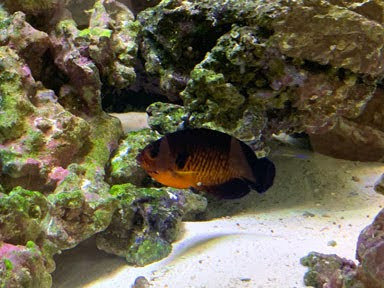
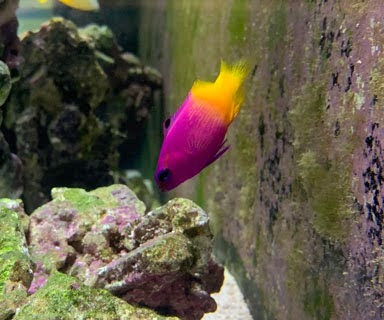
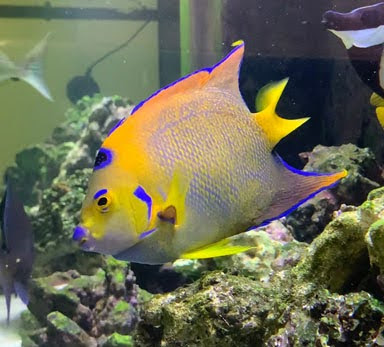
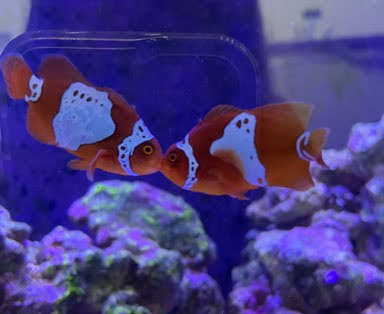
Partners
Species Ambassadors
Aglantis contains animals from the Gulf and the Caribbean. Scroll down to learn more about our residents and their wild counterparts!
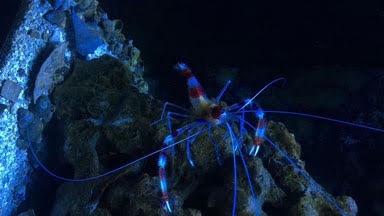
Banded Coral Shrimp
Stenopus HispidusHabitat: Found throughout the tropics in the Indo-pacific from South Africa and the Red Sea all the way to Australia. They can also be found in the western Atlantic from the north coast of South America and southern Florida to Bermuda and are commonly found in the Caribbean.
Description: The banded coral shrimp is also known as the “boxing shrimp” because of the large pincers on its third set of legs. It often holds its pinchers up like a boxer ready to fight.
Diet: Scavenger species. Will feed on algae, detritus, carrion, and parasites.
Behavior: Very shy but aggressive towards competitors. Juveniles pair up and stay together for years. It has the ability to break off its claws and regenerate them.
Bio: John David Crowstacean spends much of his time behind the rocks, but will come out during feeding times. He’s named after the famous Aggie Former Student and Heisman winner John David Crow.
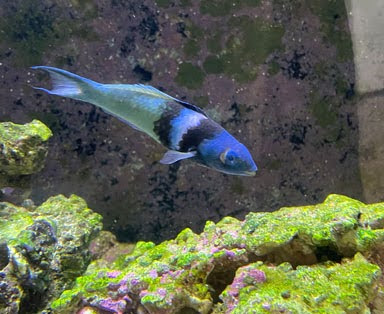
Bluehead Wrasse
Thalassoma BifasciatumDescription: This species gets its name from its blue head separated by black and white bars. The rest of its body is either green, yellow, or blue.
Habitat: Caribbean Sea and its adjacent waters (Florida, Bermuda, and the Gulf)
Diet: A generalist forager that eats a variety of prey. Known to forage for small invertebrates and crustaceans on the reef’s surface, target individual zooplankton in the water above the reef surface, and clean the parasites off of larger species.
Behavior: This species is capable of switching sex and has a very complex mating system that has been the topic of scientific study for decades.
Bio: Ol’ Sarge is named after Texas A&M’s veteran mascot and comic character.

Bubble Tip Anemone
Entacmaea QuadricolorDescription: Although they are sometimes called the “flowers of the sea”, anemones are actually animals! Bubble tip anemones have tiny algae that live inside them (called zooxanthellae) that can photosynthesize energy from the sun.
Habitat: Indo-Pacific area, including Red Sea
Diet: Primarily a filter feeder, it will try to eat whatever comes in contact with its stinging tentacles. It also eats the waste and debris cleaned from the surface of any clownfish that it hosts. Ours gets fed a piece of squid twice a week.
Behavior: Bubble Tip Anemones are known to wander around the tank. Once it finds a spot it likes, it uses its pedal disk to hold on.
Bio: Kyle is a new addition to the tank and likes to move around a lot. Once he grows large enough he will hopefully host one of our clownfish pairs!
Environmental Literacy and Workforce Development
Addressing the environmental challenges facing the nation requires a workforce skilled in science, technology, engineering, and mathematics (STEM). The America COMPETES Act mandates that NOAA promote excellence in ocean and atmospheric science while encouraging academic pursuits in STEM fields. These workforce needs are reflected in both public and private sectors, where Texas Sea Grant collaborates to fulfill its mission. An environmentally literate person understands natural systems and uses scientific evidence to make informed decisions on complex environmental issues.
